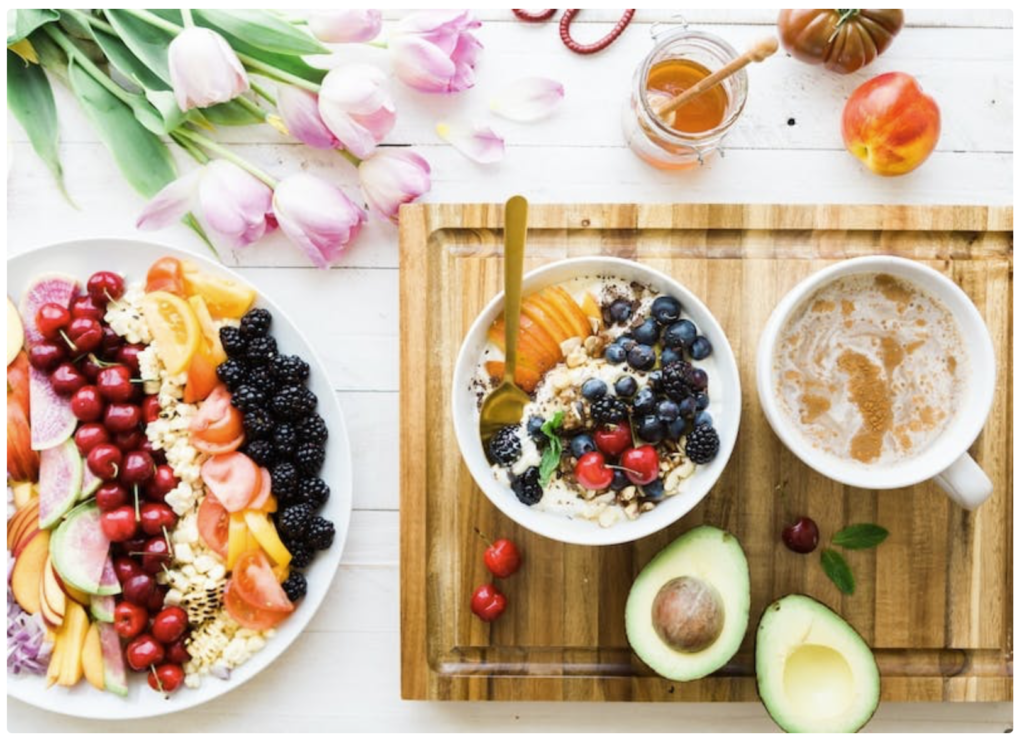
Why should someone consider their food intake in relation to their ADHD?
For those with ADHD, diet plays an important role. Moving away from sugary and processed foods can help keep symptoms like impulsivity from being “hangry” in check. Making sure that you get the building blocks of neurotransmitters from protein and other whole foods is ideal. But sometimes, just eating is more important! -especially if we’re crashing, mentally or physically. Expecting that you only and always eat whole foods is setting you up to fail. Lots of these foods aren’t readily accessible or may take extra preparation that in the moment you aren’t set up to deal with mentally. So three things to balance:
- macro nutrients
- whole foods vs processed
- and how much bandwidth you’ve got
What is the relationship between food and ADHD?
Food-especially taste and accessibility– and ADHD–low executive function, seeking stimulation or others–. We need to eat. We know we should be eating whole foods or nutritionally dense foods, but boredom, time crunches, overwhelm/meltdown/shutdown, rotten/rotting food, budgets, can all impact both what is in the cupboard or fridge and what makes it into our mouth.
Some things to consider: Is it easy? Does it taste good? Are the dishes clean to make that? Do I have the ingredients on hand? How much time will this take?
When is the best time to address meal planning?
With ADHD planning meals ahead of time can be a powerful tool and a pain at best. Whether it’s creating meal plans for the week, prepping ingredients ahead, or having some basics on hand to avoid the “what do I even eat?” paralysis, taking time to think about your meals before you’re hungry can really help with streamlining the eating process. And this all requires planning. As well as time. And executive function. Things that are already a challenge for many of us.
What modifications should someone consider making when thinking about their food intake? or What are some tips for when your brain doesn’t have the ability to plan your meals?
So what do I find helpful? Cooking protein and carbs in advance. Having things on hand that I like to eat. Toddler Lunches (grapes, baby carrots and hummus, cheese, lunch meat–etc). I’ll go through phases where I plan a few meals for the week and then rearrange them all. Sometimes when working from home, I look in the fridge and decide what the next meal is. Today based on what is in there–salad, ground pork, cheese and apples. I already ate the tamales…and the berries and whipped cream.
Will you eat it? When considering modifications to your diet for those struggling with ADHD, try and aim for balanced meals high in protein and healthy fats like fatty fish, nuts, avocados or seeds. Foods that are rich in Omega-3s like salmon are especially beneficial as they help support a healthy brain. Have some rescue snacks on hand (nuts, jerky, granola, mini-cereal bars? for a while I lived on peanut butter packets) rd.
Why Do I Need Protein with all my meals with ADHD? Protein is an important part of a balanced diet for everyone, but especially for those living with ADHD. Protein provides essential amino acids that work to build and repair muscle tissue, create neurotransmitters, and support healthy brain development. Eating protein with (most) every meal also helps to regulate blood sugar levels and keep you feeling fuller for longer periods of time. Additionally, it can help give you sustained energy throughout the day to stay focused and productive. With so many health benefits, including better cognitive performance, adding a source of protein to your meals is one small step towards helping manage ADHD symptoms.
Resources
Resources:
ADHD.Nutritionist – Rebecca King of @ADHD.nutritionist on Instagram, is a professional who specializes in the relationship between diet and ADHD symptoms. She works with individuals who have been diagnosed with ADHD and their families to develop personalized nutrition plans that can help improve symptoms such as impulsivity, hyperactivity, and inattention. Rebecca may also provide education on the role of food additives, food allergies, and intolerances in ADHD symptoms. She can help clients understand how their diet affects their brain and mood.
Plan to Eat – Plan to Eat is a meal planning and recipe organizing website that allows users to collect, organize, and share their favorite recipes. Users can easily add recipes from any website, manually input their own recipes, or import recipes from popular recipe sites. Once recipes are added, users can create customized meal plans by dragging and dropping recipes onto a calendar. The site automatically generates a shopping list based on the selected recipes, and users can check off items as they shop.
Plan to Eat also includes features to help users save time and reduce waste. The site tracks pantry inventory and expiration dates, alerts users to expiring ingredients, and allows users to search for recipes based on ingredients they already have on hand. In addition, Plan to Eat provides a social component, allowing users to connect with friends and family members to share recipes and meal plans. Users can also share their meal plans and shopping lists with others.
Don’t forget about resources you may already have! This could be using the notes app on your phone to create and check off your shopping lists, as well as utilizing services like click and collect–perfect for those who have trouble with impulse shopping!

No responses yet